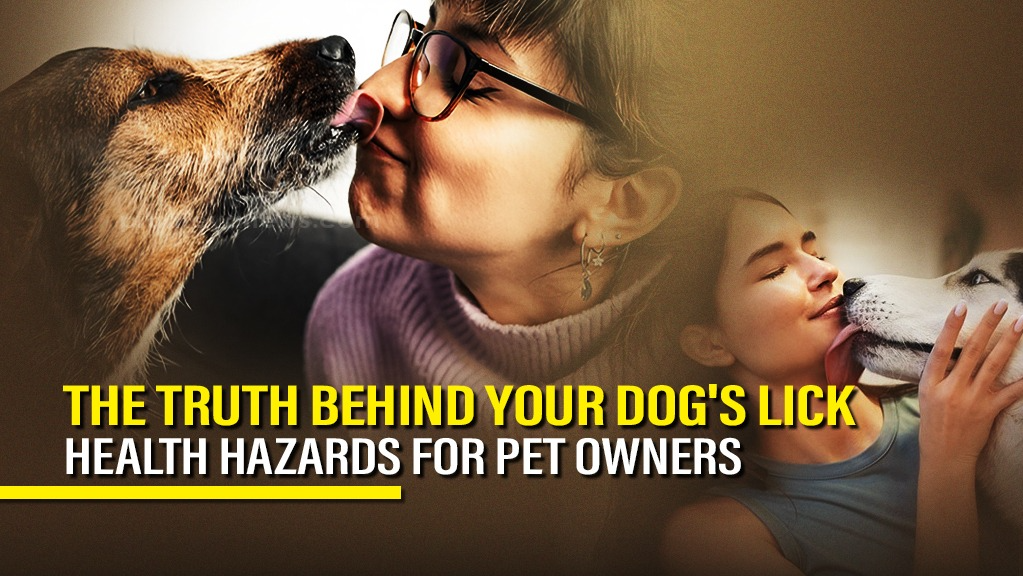

Dog Kisses: Affection vs. Risk
That familiar wet nudge from a furry nose followed by an enthusiastic lick across the face – for countless dog owners. It’s a daily display of canine affection, a valued part of the human-animal bond. We readily interpret these "kisses" as pure love. But have you ever paused to wonder what’s really behind that loving lick? While the emotional benefits of having a dog are undeniable, it's worth exploring the science behind canine saliva and understanding potential health considerations, especially within the unique context of India, where our interactions with dogs, both pets and strays, are so frequent and close.
Inside a Dog's Mouth
Let's start by addressing a common myth: a dog's mouth is not cleaner than a human's. In reality, a dog's oral cavity is a complex ecosystem full of hundreds of different types of bacteria – some studies suggest over 600 distinct species. This warm, moist environment is also home to various viruses and potentially other microorganisms. Considering dogs use their mouths to explore everything from their own bodies to outdoor environments, it's no surprise their saliva contains a diverse microbial population. While there's only a small overlap between the microbes found in dog and human mouths, dogs harbor specific bacteria, like Porphyromonasgulae (linked to gum disease in dogs), that humans don't typically carry. This difference explains why we need to be aware of possible disease transmission.
Unseen Guests: Potential Pathogens in Dog Saliva
The rich microbial life in a dog's mouth includes organisms capable of causing zoonotic diseases – illnesses transferable from animals to humans. Several bacteria commonly found in canine saliva pose a potential risk:
Beyond bacteria, viruses are also a concern. Rabies, a fatal viral disease, is transmitted through the saliva of infected animals, most commonly via bites. While transmission through licks (especially on intact skin) is highly unlikely for rabies, its presence in saliva highlights the critical importance of rabies prevention in dogs. Noroviruses, which cause stomach illness, can also be shed in dog feces and potentially spread indirectly.
The Indian Landscape: Unique Risks and Realities
India presents a specific context for assessing these risks. With an estimated 19.5 million pet dogs and a massive population of around 35 million stray dogs, human-dog interactions are ubiquitous. The large number of free-roaming dogs, many with limited access to veterinary care and vaccinations, unfortunately increases the overall potential for zoonotic disease transmission compared to regions with smaller, more controlled dog populations.
Crucially, dog-mediated rabies remains endemic in India, accounting for the highest number of human rabies deaths globally. This stark reality shows that the most significant lethal threat associated with dog saliva in India comes from bites by infected animals. While severe bacterial infections solely from licks seem uncommon according to local reports (veterinarians in Bengaluru noted a lack of such cases as of 2018), the potential exists, and the high prevalence of rabies means any interaction involving dog saliva requires awareness. Furthermore, specific data on the prevalence of bacteria like Capnocytophaga in Indian dogs is limited, making localized risk assessment difficult. Global studies show wide variation (from 5.5% in one Turkish study to 74% in another location), highlighting the need for more India-specific research.
Who Is Most at Risk?
For a healthy person with intact skin, the risk of getting seriously ill from a dog's lick is generally considered very low. However, certain groups are more vulnerable:
For these individuals, exercising greater caution regarding dog licks is advisable.
What Indian Vets Say
Veterinary professionals in India offer a balanced perspective. While acknowledging the theoretical risk and citing global cases of severe infections like those caused by Capnocytophaga, many report that such extreme outcomes directly from licks (without bites or significant wounds) are rare in their experience within India. They often emphasize that factors like compromised immunity or broken skin are typically prerequisites for serious bacterial infections.
However, this doesn't mean dismissing hygiene. Experts advise against allowing dogs to lick faces, particularly near the mouth, nose, and eyes, to minimize pathogen transmission risk. They also highlight the importance of good pet oral hygiene (teeth brushing, dental care) and regular veterinary check-ups, including parasite control and vaccinations – especially rabies shots. Preventing dogs from eating feces (coprophagia) is also recommended.
Safety Tips for Pet Owners
Balancing affection with safety is achievable through simple hygiene practices:
Conclusion: Informed Affection
Dog licks are overwhelmingly gestures of affection, deeply ingrained in the bond we share with our canine companions in India. For most healthy people, the risk of serious illness from these "kisses" is very low. However, understanding that dogs' mouths harbor a complex mix of microbes, including potential pathogens, is crucial for responsible pet ownership. The endemic nature of rabies in India adds another layer of necessary caution, primarily concerning bites but relevant to any saliva contact. By practicing good personal hygiene, maintaining our dogs' health and vaccinations, and being particularly mindful around vulnerable individuals or broken skin, we can continue to enjoy the loving licks of our furry friends while safeguarding the health of both humans and animals. It’s about finding that sensible balance between cherished affection and informed awareness.